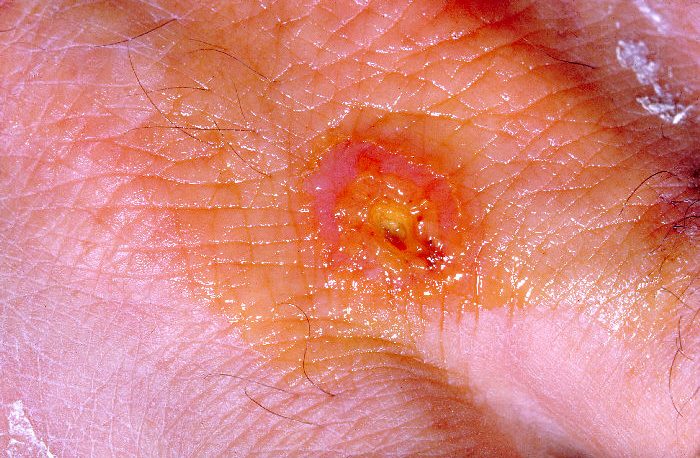Invasive Tick Diseases Are on the Rise
With another dreaded tick season in our midst, we must be aware of the invasive tick diseases that come with it.
Experts warn that every new tick season will be worse than the previous one. It may sound over-dramatic, but there is an epidemic of tick diseases. The Centers for Disease Control and Prevention (CDC) warns about seven new tick-borne germs discovered in the last decade.
It is essential to be aware of these harmful parasites, and have basic knowledge of the symptoms of tick diseases to get the right treatment on time and avoid serious health issues.
Behind Tick Diseases
It’s nearly impossible to control factors like global warming and increased traveling, but these are key reasons behind the recent growth in ticks.
However, you can stay cautious about these tick diseases, and protect yourselves and your loved ones from these hazardous bug bites by having a better knowledge of them.
Red Meat Allergy (Alpha-Gal Allergy)
Lone star ticks cause red meat allergy. They transmit alpha-gal sugar found in red meat into the human body, and when the person eats red meat, the body starts showing allergic reactions.
Symptoms of red meat allergy include:
-
- Itching
-
- Swelling of lips
-
- Swelling of throat and tongue
-
- Vomiting
-
- A headache
-
- Nausea
-
- Weakness
-
- Skin Rashes
-
- Fainting
-
- In extreme cases, it can also cause anaphylaxis
The meat allergy symptoms take a few hours to appear after the tick bite, but it isn’t a widespread tick-borne disease.
Lyme Disease
Lyme disease is the most common tick-borne disease and accounts for 82% of all tick-borne diseases. Infected black-legged ticks transmit this bacterial infection.
Initial symptoms of Lyme disease include:
- Flu-like symptoms
- Fever
- A headache
- Fatigue
- Chills
- Joint aches
- Swollen nymph nodes
- Bulls-eye shaped skin rash

A Black-Legged Tick
Remedies for black-legged tick bites should be immediately taken because if left untreated for too long, severe symptoms of Lyme disease like the following will start appearing:
- Nerve pain
- Irregular heartbeat
- Shooting pain in joints, hands, and feet
- Inflammation of the brain and spinal cord
- Facial palsy
According to CDC reports every year around 300,000 Americans contract Lyme disease and this shows the severity of the infection and how widely it’s been spread.
Anaplasmosis and Ehrlichiosis
Anaplasmosis and Ehrlichiosis are caused by different species of ticks but are usually categorized together because of similar symptoms. Black-legged ticks cause Anaplasmosis whereas Lone Star ticks spread Ehrlichiosis.
Symptoms of these both diseases include:
-
- A headache
-
- Fever
-
- Chills
-
- Stomach pain
-
- Muscle pain
-
- Nausea
-
- Confusion
-
- Cough
-
- Malaise
- Rashes can also appear but in rare cases
——————————————————
Anaplasmosis and Ehrlichiosis are the most common tick diseases after Lyme disease, and until now 40,000 Americans have been infected.
Control Exterminating
——————————————————
Rocky Mountain spotted fever (RMSF)
Rocky Mountain spotted fever is spread through infected ticks of different species. RMSF can prove lethal because there aren’t any symptoms during the initial stages of infection, and the symptoms start appearing after 2-4 days of infection. The symptoms include:
-
- Headache
-
- Vomiting
-
- Nausea
-
- Fever
-
- Stomach pain
-
- Muscle pain
-
- Lack of appetite
- Skin rashes of varying types
RMSF should be instantly treated as soon as you witness symptoms because it progresses rapidly, and can prove to be life-threatening.
Babesiosis
Babesiosis is a hazardous disease transmitted by deer or black-legged ticks. The symptoms appear sometime after the infection, and it can take a week or even months for symptoms to develop fully. The common symptoms include:
- Chills
- Body aches
- Sweat
- Fever
- Fatigue
- Nausea
- In severe cases, red blood cells can be damaged and cause hemolytic anemia
Tularemia
Tularemia is a rarely occurring tick-borne disease, and it’s transmitted by wood, dog, and lone star ticks.
There are two common types of tularemia:
- Ulceroglandular Tularemia: a red, raw, and painful skin ulcer appears on the site of the tick bite which results in swelling of armpit and groin glands
- Glandular Tularemia: swelling of glands, but no skin ulcer
Both types of Tularemia can cause very high fever.

A Tularemia lesion on the dorsal skin of right hand by Centers for Disease Control and Prevention. Public Domain.
Powassan Virus
Powassan virus infects people after direct bites from the infected tick. Symptoms of the infection will appear within a month of the bite. The common symptoms include:
-
- Headache
-
- Vomiting
-
- Fever
-
- Weakness
-
- Difficulty speaking
-
- Confusion
-
- Loss of coordination
-
- Seizures
- Inflammation of brain or meningitis.
Tick diseases can be fatal, but you can avoid them by covering yourself up while going out in bushes or woods. Also, using insect repellants, doing a full body check after spending time outdoors, and checking your pets regularly.
Taking these few preventative measures will help reduce your chances of falling ill to various tick diseases.***
More about ticks:
[catlist name=“Ticks”]

